India’s Tryst With Destiny - can Modi lead India to its date with Destiny?
Charismatic leaders do not happen every day in the life of a nation. They are a rare phenomenon. But such leaders can change the course of a nation and define its destiny. India has been lucky to have witnessed two such leaders since 1947. In the opinion of the authors, both of them can be called charismatic leaders. Indira Gandhi and Narendra Modi. But India still is far away from its destiny. We take a closer look at the two leaders.
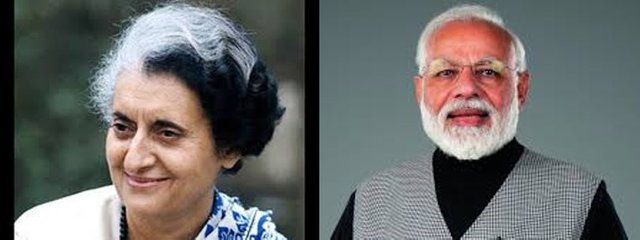
In January 1966, India saw the emergence of Indira Gandhi as the 5th Prime Minister of India. Her appearance on the national canvas happened in the wake of some tragic circumstances for India. (India had lost its sitting Primer Minister, Shri Lal Bahadur Shastri when he was on travel abroad). While the nation was stunned and was mourning, Indira got propelled into the position as the next Prime Minister. She started on shaky ground. Widely seen as a compromise candidate between two rival factions of the ruling Congress party. In the eyes of people, and, in the opinion of political pundits, Indira was a temporary arrangement. She was seen as a puppet in the hands of her party stalwarts known as ‘the syndicate’.
Indira, however, had different designs. She gradually worked her way up to not only consolidate her grip on the party but she also warmed her way into the hearts of Indian people. In a short time, she was firmly in the saddle. She garnered enough confidence to not only marginalize the stalwarts but she went on to take some path-breaking decisions. Abolition of Privy Purses, Bank Nationalization (14 of the largest banks were nationalized) and her program ‘Garibi Hatao' (Alleviating Poverty in India) endeared her to masses. The crowning glory, of course, was the war with Pakistan in 1971. Indira was widely seen as the architect of India’s victory. It led to the formation of Bangladesh as a separate country (formerly it was a part of Pakistan, known as ‘East Pakistan’). People believed in her. People felt she was a messiah who will take India to its destiny. That she will finally deliver on the promise of India’s ‘tryst with destiny’ that her father talked about in August 1947.
Indira made giant strides. Her stature grew in leaps in bounds. And, so did the aspirations and belief of people. This took Indira to the zenith of her popularity with charisma painted all over. She had achieved all this in a short span of 5 years. However, the most difficult challenge comes when you are perceptibly at the high point of your popularity and achievement. Does it become your highest point and you start to slide downwards? Or do you redefine your coordinates and move to the next higher orbit. That is the key. See the diagram below.
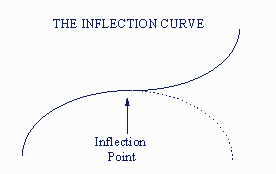
The strategic inflection point. As defined in his book ‘Only the Paranoid Survive’, by Andy Grove (Andrew S Grove was the President and CEO of Intel Corporation. The book was published in 1998 but the core message is very relevant even today).
In the years that followed in 1971, Indira made her own mistakes. Many of them were extremely significant. Without argument, the most significant of her mistakes was the proclamation of Emergency in June 1975. More than the emergency itself, the context in which it was proclaimed, made it even more monster-like. To this day it remains as the darkest chapter of India’s democracy.

Indira Gandhi went through a political roller coaster after that. To her credit, Indira fought politically and came back admirably. But, going forward she faced a lot of ups and downs. Her sins catching up with her now and then. Finally, in the year 1984, she met a violent and tragic end. Indira Gandhi was assassinated in October 1984. A sad day for she deserved better. Her charisma, however, survived her. Such was her exalted status globally that in 1999 she was named as the ‘Woman of the millennium’ by BBC.
The question then is whether she could take the nation to its destiny? Or, was she even on track towards that when she was assassinated? The answer is a big ‘No’. When Nehru delivered the words ‘Tryst With Destiny’ he went on to state that the solemn moment has arrived when the soul of a nation, long suppressed, finds utterance. Let alone achieve what was said, India did not start its journey on that path at all during Indira’s regime. During the 18 years that she was in power (save three years from Jan 1977 to Jan 1980 when she was out of power), India hurtled down firmly on the path of corruption, favoritism, nepotism, and a dynastic democracy. All norms of democracy, and all pillars of the nation, were systematically destroyed and trampled upon. Have a look.
- The Congress party graduated from being a democratic party to becoming a dynasty (family-driven) party. It led to mushrooming of many other dynasty driven political outfits in India across the entire length and breadth of the nation. A malaise India suffers to this day.
- The federal structures were trampled upon when state governments were dismissed on slightest of pretexts by invoking President’s rule. During Indira Gandhi's tenure as many as 35 times, Article 356 was invoked to dismiss duly elected state governments.
- Electoral malpractices took root in the country - cash for votes, booth capturing, manipulation of voter lists, violence, etc. - became the norm rather than the exception.
- Bureaucracy was made pliant through unprecedented favoritism and nepotism. The Swamp, as is globally talked about these days, made its appearance and became widespread.
- The fountainhead of all corruption – nexus between politician and industrialists – emerged on the national scene and in due course took very strong roots in the country. This monster became bigger and bigger over time. The advent of a conceptual foundation for the corruption and fraud cases that the country is suffering from today, can be attributed to her times. Over the years it has become more sophisticated and perfected.
Thus, far from discovering the soul of the nation and finding its utterance, under Indira’s regime the soul of the nation and the fabric of the society was destroyed and blown to smithereens. This was certainly not the destiny of India and neither was this India’s heritage. In the diagram above on the strategic inflection curve, Indira Gandhi was on a slide path (the dotted line shown in the diagram above, rather than rebooting herself on the strategic inflection point and ride the next curve). No questions about that.
Almost 18 years down the line came a man from the other side of the political spectrum. This man was a young adult when Indira first became the Prime Minister. He was around 16 years of age in 1966. Unlike Indira Gandhi, who came from the elite class with a heavy influence of Western culture, and, belonging to a rich and known family, this man came from humble origins from interior rural India. He came from a typical family from the poorer section of the society. No fancy education, no fancy lifestyle, no fancy hobbies and no social presence in the elite circles. A typical son of the soil, working his way up through sheer hard work and dedication. This man saw life in India in real terms at very close quarters. No wonder, over the years, this man emerged as a dyed-in-wool nationalist with strong linkages to India’s culture and heritage. And, a very fine understanding of Indian society across the length and breadth of the nation. A man of frugal means, simple living and, strong desire. He had a dream to do good for the country. Not relating to what he saw around him, and not in agreement with the way this great nation and the society had evolved under various rules so far, this man believed that India’s destiny is different. Naturally, he gravitated towards the other side of political discourse. He engaged himself wholeheartedly to the cause. In due course, he became part of a political set up known today as Bhartiya Janta Party (BJP) today. The BJP is the political opposition to Indira's Congress party.
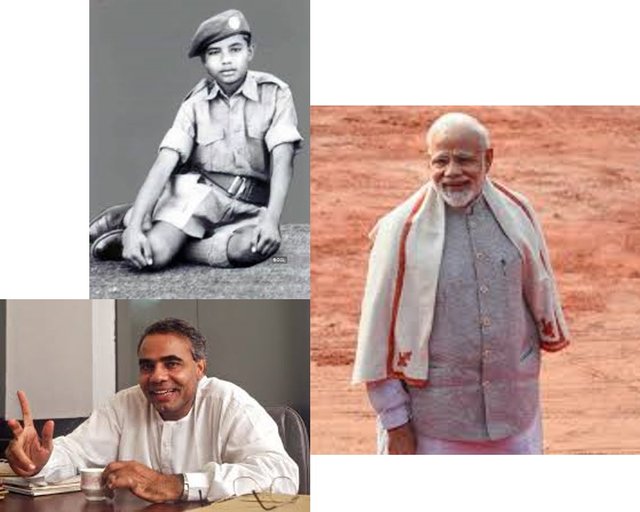
This man was Narendra Damodardas Modi. Or Modi, as he is respectfully and affectionately known across the nation and the globe. Modi was propelled onto the center stage of politics in equally violent and tragic circumstances. He came into headlines in the wake of Gujarat riots in 2002. Before Modi could even realize, he got painted as murderer, monster, killer, religious fanatic and what not. Fairly and squarely blamed for the deaths of people during the Gujarat riots of 2002. He had just become the Chief Minister of the state of Gujarat when riots happened due to events totally unrelated to him. And, despite Modi’s best efforts, in an emotionally charged atmosphere, events escalated leading to riots.
The knives were out for Modi. There was an unprecedented effort by the Congress party to write his political obituary. It was a relentless campaign against him of a magnitude never seen before in India. Aided and abetted by the compromised media (commonly referred to as ‘Lutyen’s gang’ or ‘Khan market’ gang in Delhi). The so-called intelligentsia, who had thrived on the largesse of the dynasty of Indira and the ecosystem of nepotism and corruption, also joined in the chorus baying for his blood. This man, however, was made of sterner stuff. Something which the opponents had not bargained for. The more they beat him, the stronger and more popular he emerged. Not only Modi took his state Gujarat to the top league in India, but he also diligently cleared his name of all wrongdoings through the land mined maze of legal cases, inquiry commissions, intelligence reports, and what not – you name it. Modi rose Sphinx-like. He caught the imagination of the people winning their confidence and admiration over the years. Such was his aura and charisma over the years that people of his state kept re-electing him repeatedly. Modi became the Chief Minister of the Gujarat state assembly midway through the term, sometime in 2000/2001. He got re-elected in 2002, followed by 2007 and then again in 2012. Somewhere during this period (2010 to 2014), Modi’s popularity and charisma started to transcend the state boundaries. And, I dare say even the national boundaries. So much so, that he was popularly perceived by people as the Prime Ministerial candidate for India in 2014. Love him or hate him. But you just could not ignore him. Such was his presence on the political scene.
As we approached 2014, and when the crunch time came, Modi was head and shoulders above anyone else in the race to become the Prime Minister, either within or outside his party. There was no leader equivalent to the stature and charisma of Modi. The sitting Prime Minister Manmohan Singh was a Pygmy in contrast to the commanding stature of Modi. And L K Advani, the tall leader of BJP (from Modi's own party and widely perceived to be Modi's mentor as well along with Atal Ji) was also no match for Modi. Eventually, Modi went on to beat the forecasts of all the poll pundits, the established media, vested interest groups, in India and abroad. And, even the rival factions within his party led by no other than the BJP stalwart. Modi won the elections with a clear majority, something that India had not seen for the last three decades. His party BJP won 282 seats on its own surpassing the midway mark of 272. Modi was sworn in as the 14th Prime Minister of India in May 2014. There was widespread jubilation, followed by a surge of aspirations and hope.
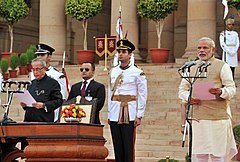
Modi started as a popular leader in 2014. Over the years, based on his performance, his respect and popularity kept growing. Not just nationally, but internationally as well. The performance has been truly remarkable. The various schemes launched by his government have delivered benefits to the poor at ground level. Benefits in terms of basic needs – shelter, cooking gas for households, electricity to every household, making India open defecation free - and a host of other schemes have delivered benefits to every stratum of the society. From a child yet unborn (pregnant mothers) to old age. Along with all these achievements on the domestic front, he has also raised the profile of India across the globe. The world community looks up to India today for what the country is capable of doing in the years to come.
All this augurs very well for the country and Modi personally also. No wonder, when the crunch time came again in 2019 Modi won the elections hands down. The win came notwithstanding a highly visible and an extremely vicious no holds barred campaign run by the opposition. The entire opposition ganged up against Modi despite their differences and clash of interests. Modi's party BJP nevertheless came back with an even bigger majority of 303 seats as against 282 in 2014. (The authors had predicted Modi victory of this magnitude in their article published here in April 2019 - https://steemit.com/politics/@rgov/india-election-analysis-and-forecast-the-big-picture-and-final-projection).
So, where does Modi go from here? This question assumes great significance. And is much bigger then many would perceive it to be. In terms of ‘Strategic Inflection Curve’ talked about above, does Modi whittle away as a dotted downward spiral (as was the case of Indira Gandhi) or does he realign his coordinates and catapults on to the next curve and higher orbit. Only time can settle this debate conclusively. However, that does not prevent us from critically examining the data points available to us and make an informed assessment on the question – Is he on track? As the authors see it, and, as the data suggests, Modi is clearly headed towards redefining the coordinates and mounting the next curve rather than whittle away.
Modi had a clear thought process and a plan towards taking India to global heights. A nation has no existence or meaning in the absence of its constituents. So essentially it is a question of how Modi takes Indians through a path of evolution in the global society. This evolutionary path is the journey of the nation towards its destiny. Somewhere along the line, a contour emerges, and, that would be India achieving its destiny.
In terms of famous Maslow’s hierarchy of needs, an individual seeks fulfillment on five needs – Physiological, safety, belongingness and love, Esteem, and Self-actualization. In the first term, 2014 – 19, Modi has addressed the physiological and safety needs (https://steemit.com/india/@ajain/maslow-s-hierarchy-in-context-of-nation-s-governance-objective). An ideal state may not have been achieved, but a substantial and significant dent has certainly been made. (The authors have come out with detailed articles on this front. A series of articles were written in the beginning of 2019 by way of rebuttal to FT London, on their misleading Opinion Editorial on India. The various benefits were detailed in these articles. Here is the link to the concluding article of FT Rebuttal series which contains links to all the other articles - https://steemit.com/politics/@ajain/ft-rebuttal-concluding-summary. The authors have also written a detailed article on Maslow's hierarchy and its application to the Governance of a nation - https://steemit.com/india/@ajain/maslow-s-hierarchy-in-context-of-nation-s-governance-objective).
In the second term, 2019 – 24, Modi has started moving aggressively on other fronts. The foundation for the same was laid in the first term itself. If the actions taken by Modi 2.0 are any indication, then Modi has mounted the next orbit on the strategic inflection curve. In a short period of 100 days, some extremely critical and significant decisions have already been taken. These decisions have been made a reality with legislative action for the same having been taken with a successful outcome. The corresponding legislative bills have been passed in both houses with clear and thumping majority. They have today become the law of the land.
- The Muslim Women (Protection of Rights on Marriage) Bill, 2019 (or Triple Talaq Bill as it is commonly referred to as). The bill makes the practice of triple talaq a cognizable and punishable offense. A practice of Triple Talaq had evolved into inhuman and undignified dimensions in India. It has been very aptly put by the government. This bill is not about an affront to Muslim personal law. It is instead about the dignity of women, justice to women, and protection of women’s rights. All these fundamental rights are a part of Indian constitution but an anomaly had crept in certain sections were allowed to override these due to appeasement politics.
- The Unlawful Activities (Prevention) Amendment Bill, 2019 was passed in Parliament (both houses). This is another milestone action. It is meant to give teeth to law enforcement agencies in tackling terrorism. If there is one scourge that India has experienced an extreme overdose off, it is the scourge of Terrorism. More so, in the last 35 years. 1000s of innocent lives have been lost and billions of $ worth damages have taken place. Not to mention the softer issues of emotional turmoil with the people at large. Coupled with the National Investigation Agency (Amendment) Bill, 2019 that has also been passed, Modi 2.0 government has provided a decisive and comprehensive framework for dealing with this problem. Action on these two bills had been pending for a long time due to appeasement politics of erstwhile governments even when they had a clear political mandate. Through this measure, Modi has also signaled to the global organizations and power centers that he means business on the front of terrorism. Modi has been raising the issue of terrorism on practically all international forums and in one on one meets with global leaders. This scourge has international dimensions and there would be few countries in the world that have not been affected by it. Yet for reasons best known to the global community, enough action to counter-terrorism has not been forthcoming. Modi has put other governments on notice on this.
- The biggest and boldest action has happened on the front of Jammu and Kashmir (J&K). There were 564 princely states in India besides Sikkim at the time of transfer of power in August 1947. All 563 states except J&K were successfully merged with India. Only one state J&K remained. This one state had been eluding a definite solution for the last more than 70 years. Over the years it became a complicated issue with many vested interests and politics taking over. Not just within India but internationally as well. The most notable problem being the Ethnic cleansing of minority community (Hindus) from the state. And the other being the illegal occupation of a part of the state by China willingly abetted by Pakistan. The Jammu and Kashmir Reorganisation Bill, 2019 was introduced and passed by Parliament in August 2019. Jammu and Kashmir has been fully integrated with India, something that should have happened at the time of integrating the other princely states in 1947–48 time frame. Modi 2.0 has taken the bull by the horn. The bill sets right the many anomalies that were created by acts of omission and commission by the powers in 1950 time frame and were kept that way for more than seven decades by the powers that followed, to suit the vested interests and lobbies. While these vested interests and lobbies gained in hefty terms the people of Kashmir and the country lost very heavily over the years. It is but natural that these are the very people (vested interests and lobbies) who are making a huge noise and are trying to raise a hue and cry at any and every place. At any and every forum and platform. And in any and every content format, fake news included. Vested interests and lobbies include countries like Pakistan and China. But for all their labor they are getting limited or no success. As we pen down this article the State is fast returning to normalcy, much to the chagrin of these groups. The authors have no doubt that not only things will be normal soon, but the vested interests and lobbies will also be exposed and defeated. The people will experience the power of democracy, vastly improved standard of living and a much better lifestyle. And we should not forget the significant impact on the territorial integrity of the nation that had come under threat in the last few decades due to the soft approach of the governments in power. In a way, the task is still only half done. The issue of POK (Pakistan Occupied Kashmir as it is commonly called) remains to be resolved. And that includes a portion that is called Aksai Chin which Pakistan has allowed China to occupy illegally. It will not be long before the issue comes center stage, knowing the way Modi works.
The Modi 2.0 juggernaut is on the move. The above is by no means the only focus and result areas. Efforts are on way to resolve many other ticklish issues that have important ramifications for the country. The resolution of Ayodhya dispute (Ram Janam Bhoomi issue) and the implementation of NRC (National Register of Citizenship), are at differing stages of finding/implementing a solution. The authors are confident results will come sooner rather than later. The Supreme Court of India has set upon itself the task of coming up with a judgment on this ticklish issue by 18th November. And the NRC is being implemented in Assam as the first case. Already many other states are coming forward to look at NRC and probably take it up for implementation in the near future.
The above are not the only issues. There are many other fronts on which the Modi 2.0 juggernaut is moving.
• Modi has defined a vision for India to become a $ 5 trillion economy by 2025. As usual, the knives are out. Naysayers are making a mockery of the same. But needless to say, the percentage of these naysayers is considerably less this time. On the other hand, the ‘Vision’ is inspiring a very large proportion of the people.
• Bringing fraudsters and corrupt to justice is another important action point. People who committed fraud against the nation and country’s economy, are being brought to book. With increased cooperation from recipient nations for illegal money, the net has been cast far and wide. It is becoming very difficult to evade the same. Results are already showing with important people and/or their accomplices having been put behind bars. Going forward things are happening at a much faster pace.
• The actions initiated under Modi 1.0 on agrarian reforms are getting into fruition stage. They are expected to cross the basic threshold level. It will show a very sharp acceleration after that. India lives in rural areas. We have heard this for decades. It is for the first time that there is a government that is working towards making the lives better for rural India and getting them to participate in the nations march towards higher ends.
• India has upped the ante on the international front. With the achievements of the earlier term under their belt, the Modi 2.0 is dealing with absolute confidence in the global arena. There is a relentless pursuit of defining win-win relationships. Gone are the days of diffident and apologetic diplomacy where India used to acquiesce under pressure. Today’s India is assertive in a positive way.
• As we go to the press, India has unleashed significant financial reforms towards unshackling the economy and making it attractive to investment and growth within and outside. While the political opposition is hitting out at the reforms, the expert opinion globally is undivided in terms of the significant positive impact these reforms will have on the Indian economy. In turn, it will have an impact on the well being of individuals.
Notwithstanding all that has been said above, perhaps the most significant change starting to become visible in the country is in terms of ‘GenNext' becoming curious about India's heritage. There is a growing realization that our roots go back to more than 5000 years and not a few centuries only. There is an effort by the government to bring to the fore the saga of our heroes from decades-old, to centuries-old to millenniums old. This is being done by the government without any religious, regional, or political bias. So we see a Chhatrapati Shivaji Statue coming up near Mumbai, A Sardar Patel statue already put up in Gujarat. There is a war memorial that has come up in Delhi to honor the brave soldiers of our nation. A museum on Netaji Subhash Chandra Bose has been set up in Red Fort at Delhi. Documents and Memorabilia on Netaji from all over the world have been collected and displayed in the museum. A fitting tribute to this brave son of the soil. Many consider him to be the first Prime Minister of India in exile. Baba Saheb Ambedkar, Veer Savarkar, and many others are getting their due recognition and appropriate place in history. Religious places and festivals are being celebrated in the right spirit and fervor. Very recently, the Kumbh Mela was organized in Prayagraj (formerly called Allahabad). The biggest congregation of human beings on the earth. In about a month some 120 million-plus people congregated in one place. All of it is having an impact on India's ‘GenNext' and even the middle generation. It is an eye-opener for them as regards the rich culture and heritage of our nation. Can belongingness, love, esteem, and self-actualization be far behind? The answer is a resounding ‘No'. This to the mind of authors will be India meeting its destiny soon. This will be the soul of a nation, long suppressed, finding utterance.
However, the journey will not be complete without India finding its rightful place in the global leadership conundrum. Modi has worked on it from day one of his coming to power and today India has a lot to show by way of results. Modi was not only denied a Visa by the US in 2005, but his existing Visa was also revoked in 2005. From that stage to now, the scenario has changed 180⁰. Today Modi is considered as one of the most influential and powerful leaders across the globe. In a poll conducted in June 2019 by British Herald Magazine, Modi was polled as the most influential leader ahead of Vladimir Putin, Donald Trump, and Xi Jinping. But polls and surveys notwithstanding, here are some tangible results that reveal Modi emerging as a global leader in the top league.
- In September 2014 the UN adopted a resolution declaring a Yoga Day to be celebrated across the globe on every June 21st since 2015. A total of 177 nations co-sponsored the resolution, which is the highest number of co-sponsors ever for any UN General Assembly resolution of such type.
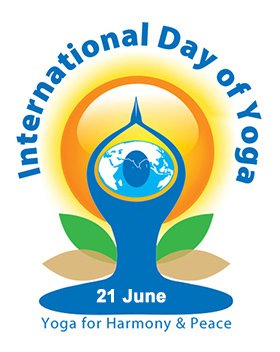
- Modi played a key role in during the CoP 21 Conference in 2015 in Paris. He pushed the countries of the world towards taking on measures to arrest/reverse climate change. India was among the first few countries to sign the agreement and took aggressive targets for achievement. In the year 2018 Modi was awarded ‘Champion of the Earth Award’ by United Nations. Today Modi is acknowledged worldwide as a leading champion for climate change action.
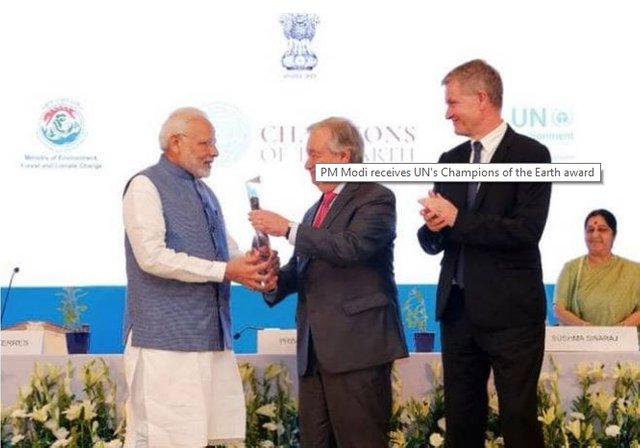
- Terrorism has been another of those curses globally from which many countries are suffering. The world has paid an extremely heavy cost for the same. Modi has raised the issue vociferously at UN and also at all his one to one meetings with global leaders or small groups like SCO, SAARC, BRICS, etc. He has been successful in shaking the world and today there is some sense of urgency among world bodies to move towards controlling this menace.
The above are only some of the measures at the global level where India is asserting itself to the benefit of the global community. Modi has gone to countries and places no other Indian Prime Minister has been to. For instance Mangolia, Bahrain, Russia’s Far East. It automatically connects India to these places and people. These efforts and results thereof are being acknowledged also by the global community. In the last five years plus Modi has been given the highest civilian award and honor by quite a few countries. Order of the Holy Apostle Andrew the First, the highest civilian award of Russia. Zayed Medal by UAE. Rule of Nishan Izzuddeen, the highest civil honor in Maldives. Grand Collar of the State of Palestine by Palestine Government. King Abdulaziz Sash Award, the highest civilian honor in Saudi Arabia. Amir Amanullah Khan Award by Afghanistan.And so on. Many of these awards have been given by Muslim countries which directly negates the hindu fanatic narrative falsely spread against Modi and India. All this is softly pushing India into prominence globally and a soft leadership position across the globe.
So, in the final analysis, where do we stand. Can Modi take India to its destiny? In the eyes of the author, and as the data points above show, there is no doubt. Modi is actually well on his way towards achieving it. The decade of 2020s will see India keep its tryst with destiny.
Glimpses of Modi with some global leaders:!
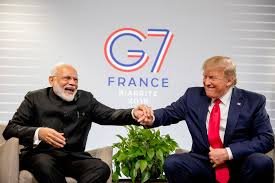
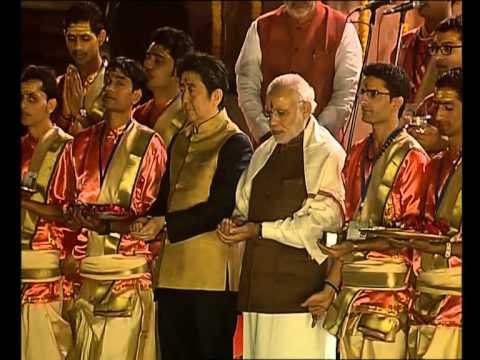
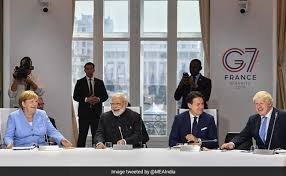
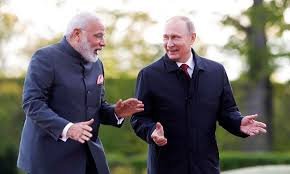
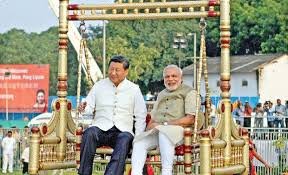
we thank you for reading through the article. It will be our pleasure to interact with you. Please feel free to leave your comments and observations.
IG did not much except creating Bangladesh. She was divisive and not inclusive like Modi. She believed in classes and that is why created with help of Gyani Zail singh, Bhinderenwala, which ultimately led to her assassination. She followed appeasement of muslims and moved towards islamisation of india. Not proud of our heritage. Glorifying only mugals and wiping out Pratap, Rana Sanga, Vivekanand, prosperity of empires in south, acknowledged Gods including Ram, othere freedom fighters like Bose, Patel, Tilak and so many.
That is true. I also believe that the root cause of India's problem today is the appeasement policies which were initiated by Indira Gandhi. Thankfully, with Mr. Modi focusing on financial structure of the society rather than religion and caste, we can look forward to a glorious India in near future.